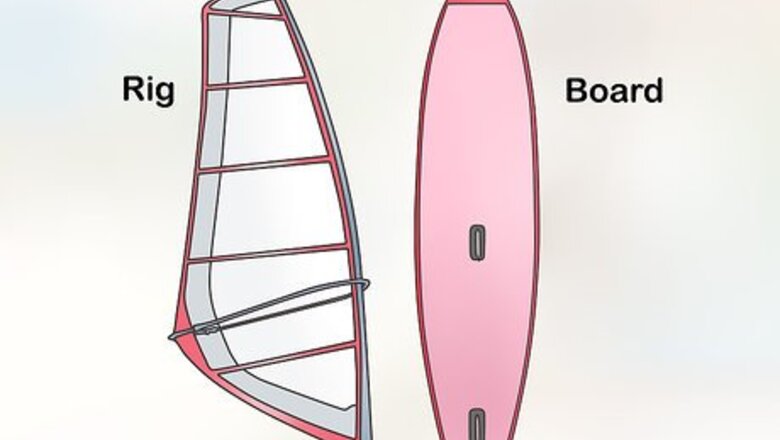
views
The Kit
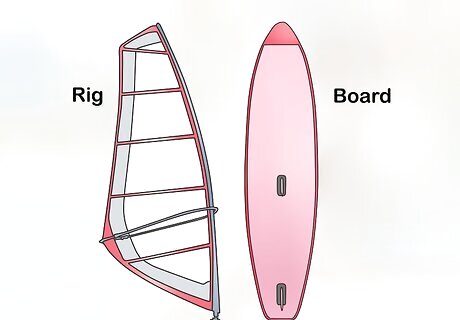
Knowing your kit is helpful as when others give you advice you need to know what they are talking about. The kit is divided into two parts; the board and rig. The board is the surfboard-like part you stand on, and has one or more fins and daggerboards (on some models) underwater.
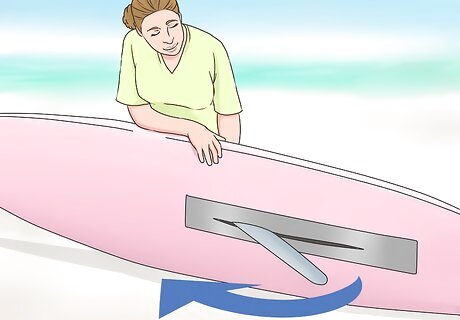
Remember that when starting the daggerboard, it should be down at all times. You can do this by pulling the big nob towards the rear, or stern, of the board to lower and towards the front, or bow, to raise when packing away.
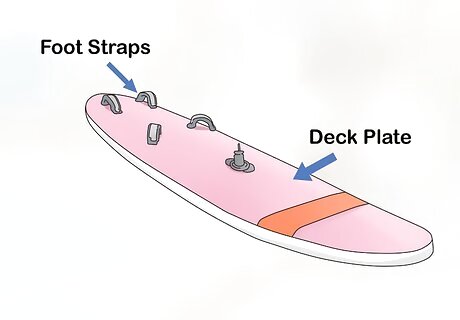
Know that there will also be foot straps and a deck plate to hold the rig on. The rig consists of a sail, mast and boom. The boom is the bit you hold on to, but the mast can be used for support. A cord should run from the boom to the bottom of the mast, this is the uphaul and is used to pull the sail up. The boom often has harness lines hanging from it.
Basics of Starting
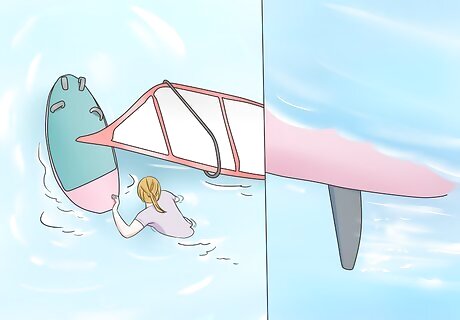
Push the board out into deep water until the fin is clear of the bottom.
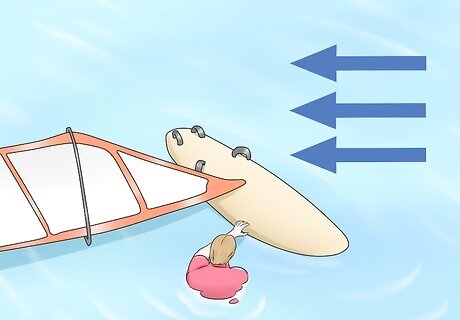
Get a sense of the wind direction, and maneuver the board so that the sail is downwind of the board.
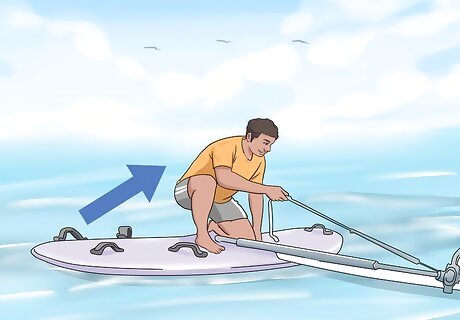
Swim or walk to the upwind side and clamber onto the board - elegance is not required! Stay on your knees and grab a hold of the uphaul, without pulling up the sail yet.
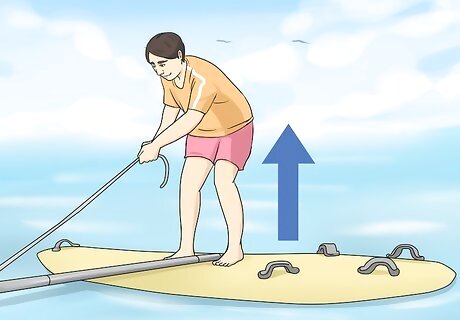
Raise to your feet at a slow pace. Using a beginners board should mean you are pretty stable - rock back and forth on your feet to get a feel for it.
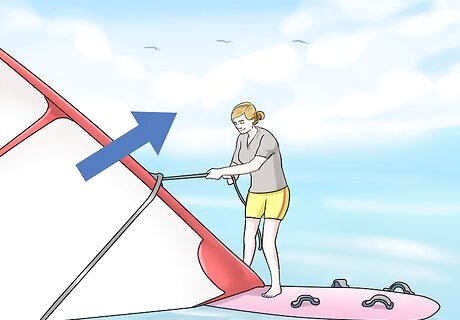
Bend your knees slightly and pull the sail up from the water with the uphaul, hand over hand like hauling in a rope. Try to keep your back and body somewhat upright. If you feel your lower back starting to ache, you are bending over too much.
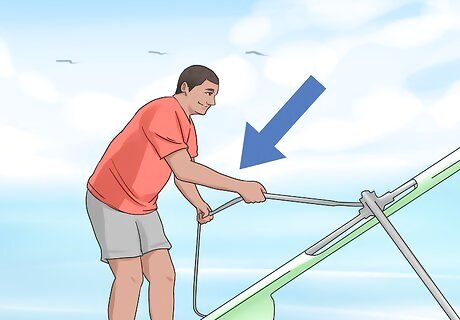
Take hold of the mast with both hands and let it swing. This is called the "safety" or "control" position: total control with next to no power.
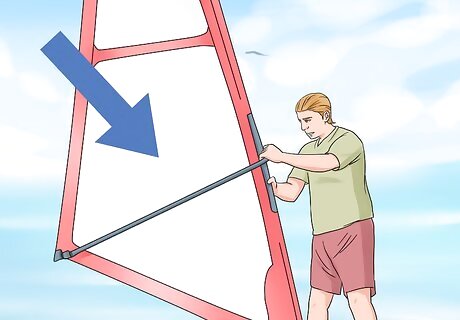
Practice steering(called Center of Effort Steering) in the "safety" position. With the mast straight up tilt the mast to your left. Your body should transfer this imbalance(the center of effort of the sail is not balanced with the center of lateral resistance of the board) to the board and make the board turn(or spin) clockwise. Tilt the mast to the right and the board will turn(or spin) counterclockwise(anticlockwise). The stronger the wind and the further you tilt the faster the board will turn(or spin). In a stiff breeze you may be sailing very slowly at this point. Another steering description is as you tilt the mast to the stern the board will head up in to the wind. This is also described in the turning section of this doc. Tilting the mast to the front makes the board bear off from the wind.
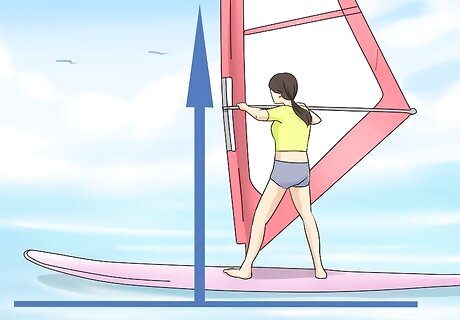
Start moving. Look and see which side the bow of the board is in relation to you, and place your lower hand on the boom so the mast is leading the sail towards the bow(front). When you feel ready, transfer the other hand to the boom. Don't let the sail pull you down - the mast should be perpendicular to the board, so lean back and keep the arms straight. This is called the Number 7, and that should indicate the posture to you!
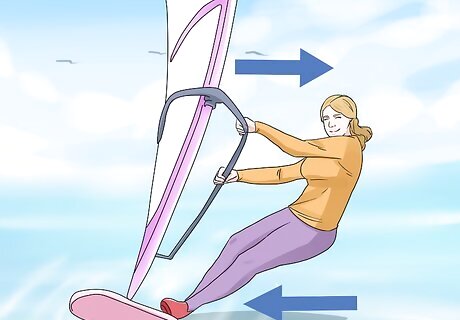
Pull with the stern wards hand (the back hand) to accelerate - let it out to slow down. Keep your feet behind the mast foot, with the toes of the front foot facing forwards.
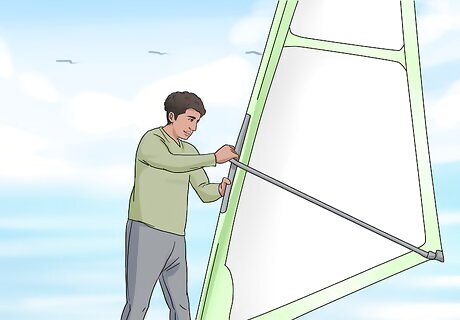
Relax! If you need to stop, return to the safety position, or drop the boom if it is safe to do so. Make sure it goes in front of you, and bear in mind you will get very tired if you have to keep on picking it up!
Turning
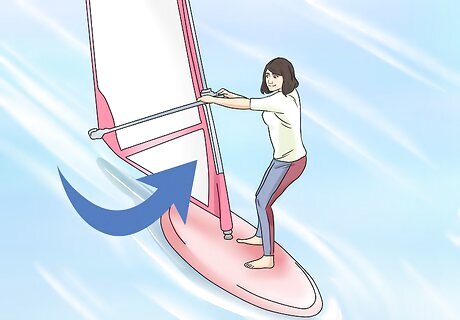
Tilt the mast, from the safety position, towards the stern to turn the nose of the board upwind (behind you) or towards the bow to turn downwind (in front of you).
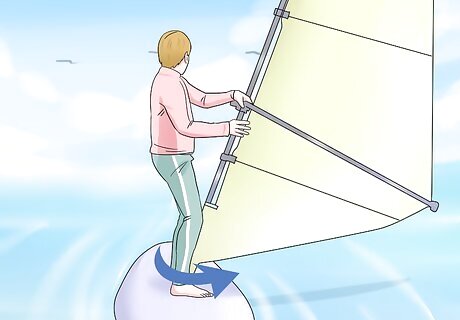
Step around the mast, as the nose comes around, to get to the other side. Now you can sail away! This principle works whilst sailing too - tilt the mast forwards and back using the boom to adjust your course!
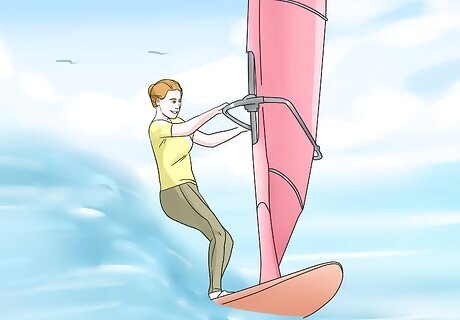
Enjoy yourself!



















Comments
0 comment